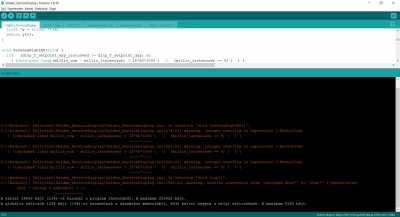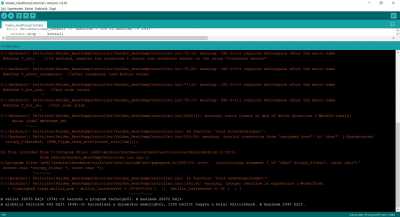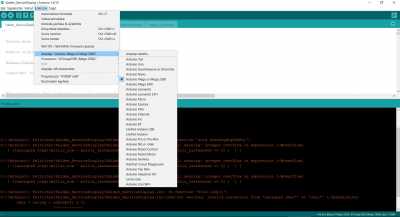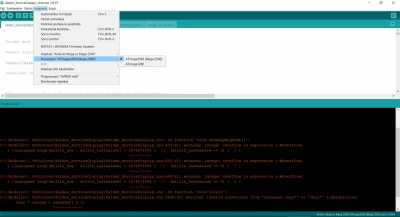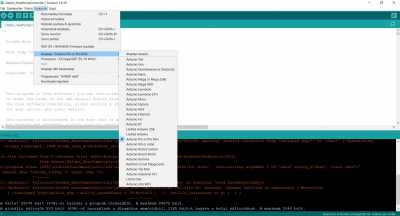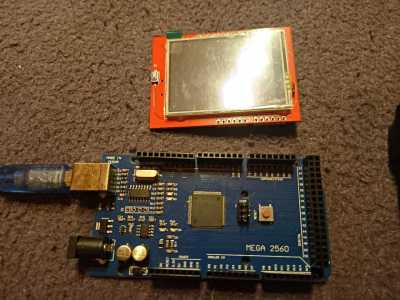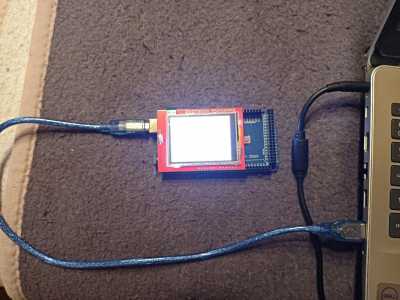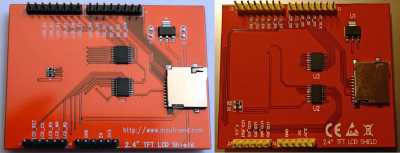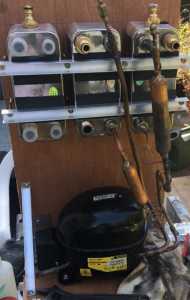DIY Heat Pump controller (driver)
Hi, all!
In the past few years, I have developed my own heat pumps and created a DIY heat pump controller.
This controller is open to the public and is distributed free of charge. The source code is open source, so the controller can be used as is or customized for any operating conditions.
Hope this will be helpful to someone in renewable energy installations.
Valden Heat Pump Controller
The Valden Heat Pump controller is an open source platform to precisely control heat pumps. This controller can be used for the automation of newly built Heat Pumps (HPs), as a repair controller for old systems or as control system for performing experiments on refrigeration equipment.
Specs
- 12V 0.5A DC power supply,
- 230V output,
- 4 16A relays: Compressor, Hot Circulating Pump (CP) or Air Fan, Cold CP or Air Fan, Crankcase Heater,
- 2 inputs: Hot and cold side refrigerant over/under pressure NC sensors,
- up to 12 temperature (T) sensors, -55..+125 °C range,
- Electronic Expansion Valve (EEV) supported, 6 pin EEV connection: 4 * coils + 2 * 12V,
- automatically turns on/of system when heating required,
- automatic power saving mode,
- built-in protections: cold start, overheat, short-term power loss, power overload, ground loop freeze, compressor protection against liquid and other,
- LED indication,
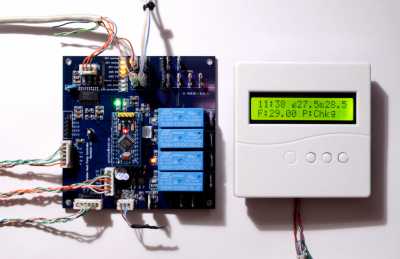
Refrigeration schemes supported
- Heat Pump (HP) with Electronic Expansion Valve (EEV),
- HP with capillary tube or TXV,
- EEV-only controller.
Further details, assembly, appendices, fine-tuning options, illustrations, abbreviations, and so on you can find in the permanent Valden Heat Pump Controller repository: https://github.com/openhp/HeatPumpController/
If you have any questions, please feel free to ask me.
Great job, really interesting to see what's involved in controlling a heat pump and good to know I have another option if my cheap Chinese ASHP electrics are kaput.
Thanks
Jon
Hi Gonzho!
I started building a heat pump (I'm still in the process of getting parts), I was very happy with your control project.
I tried to upload arduino ino files but it writes an error.
Unfortunately I don't understand Arduino, so I can't find the cause of the error 🙁
Can you help me with what could be wrong?
Thanks,
Tamas
Valden_ServiceDisplay.ino
Valden_HeatPumpController.ino
I need to work on my Hungarian, but some wild guesses that it could be either a problem with communication with the Arduino - perhaps the programming cable (too long?). Or it could be that you've configured the wrong device in the Arduino GUI. He's using the ATmega328P, I wonder if you might have a different part?
Unfortunately, I can't switch to English.
It gets stuck during the check, it doesn't even try to upload.
Service display:
Heat pump controller:
On Gonzho instruction screenshot Arduino IDE board setting: "Mini", but in BOM is "Pro Mini".
I tried both settings, but not good. I have Adruino Pro Mini 5V/16MHz board.
Hi,
I am not familiar with Ardruino programming, but it would appear that one of the calculations being performed is creating an Integer Overflow, which would mean that the system is not capable of coping with the size of the result.
@derek-m The integer overflows are just warnings, and I don't think they're the source of the problem. It seems to be saying is the program is too big for the available memory - when it builds it saying things like (guessing roughly) 'global variables 883 bytes, plus dynamic memory 1165 bytes. Maximum is 2048 bytes'. What I'm not clear about is whether this is at build or programming time, but I think build time. Which is why I query what kind of chip is being programmed. The Atmega328P (Arduino Mini/Pro Mini) has 32KiB of flash and 2KiB RAM, while the Atmega2560 (Arduino Mega 2560) has 256KiB flash and 8KiB RAM.
It seems the OP's screenshots show both chips, but because this is Hungarian I'm not clear if these are errors or simply informational messages. If I remember the Arduino tools print the memory size occupied by the program when it's successfully built - it might actually be OK, because on the Mini it's taking 97% of flash and 43% of RAM, leaving the rest for dynamic memory.
@tamkov If you try to program your board, does it then fail?
Ah, from googling around, the format is:
Sketch uses 3328 bytes (10%) of program storage space. Maximum is 32256 bytes. Global variables use 2016 bytes (98%) of dynamic memory, leaving 32 bytes for local variables. Maximum is 2048 bytes.
and that doesn't appear to be an error in this case. If it was it would say that.
Thanks.
I tried to upload.
Heat pump controller: uploaded with no errors, looks good, it also sends data via serial port. (bare arduino, controller pcb not yet assembled)
Service display: uploaded with no errors, but lcd is empty, only white background.
Arduino and LCD is new, not used. I tried another 2560 panel but the same.
Could there be no display as long as there is no rs485 connection to the controller?
There is a difference in LCD panel:
Then there is no problem with the translation warnings?
@derek-m
Yes, I did the same with google searches, but I don't know how to fix it.
I tried arduino programming many years ago, but only on an amateur level.
I still had a problem with numbers. (I don't understand a now either floating point number representation)
About 4 months ago I finished our diy GSHP. I think your controller is much more sophisticated than the one I made - our house is very well insulated, needing at most 1.6kW (0C outside 20C inside), and the heatpump I made is a tiny 2.4kW heat output and has simple capillary tube metering device rather than the more sophisticated EEV. Our controller really just monitors behaviour and efficiency, and would switch it off if something got too hot or cold, does a bit of pump over-run. All the 240V stuff I did is on a DIN rail - relays and power meter etc, so the "mbed" controller is low voltage only.
I used a trencher to dig up our garden, putting in 4 parallel 25mm pipes, 40m long each, so a total of 120m length. I filled it initially with straight water, it was ok for a month before it showed signs of icing up, so I added glycol (£200) which fixed it.
The heatpump is made from a 2nd hand R290 Danfoss compressor (ebay!), pair of stainless heat exchangers, copper tubing, and a few other bits. It's physically outside, but inside the EWI envelope of the house - I thought safer outside, but better to have a nice stable temperature. It sounds like a fridge when running, but with the EWI "door" correctly in place it is silent. Everything is bolted to an exterior plywood frame, see pic. If I refurb it sometime, I will upgrade to an extruded aluminium frame for a longer life.
It's been running since Dec 2021, so far 760kWh elec used by it in around 110days operation, we're off the gas 🙂
- 26 Forums
- 2,367 Topics
- 53.7 K Posts
- 343 Online
- 6,042 Members
Join Us!
Worth Watching
Latest Posts
-
RE: Solis S6-EH1P8K-L-PLUS – Why I Chose It and What I’ve Learned So Far
@drei Personally I didn't see any point paying the s...
By Bash , 32 seconds ago
-

RE: Tesla Powerwall – More of a ‘Luxury’ Than an ROI Winner!
Also, though they weren’t prepared to match the price t...
By Toodles , 20 minutes ago
-
RE: New Fogstar 15.5kWh upright solution
They all use a standard or derivative communication and...
By swwils , 26 minutes ago
-
RE: Help needed with Grant Aerona 3 issues
The black cylinder in the second photo looks like an ll...
By JamesPa , 32 minutes ago
-
RE: How long will your energy contract last?
My INTELLI-FIX-12M-25-08-29 has less than 12 months to ...
By Batpred , 40 minutes ago
-
Wow, it looks like I missed out in the fun here.. Whe...
By Batpred , 43 minutes ago
-

RE: GivEnergy 2025 forthcoming batteries and inverters
Then, perhaps @toodles , you should've made a submissio...
By Transparent , 53 minutes ago
-
RE: Changing from 4-port buffer to volumizer
Here are my comments, others may have something to add ...
By JamesPa , 1 hour ago
-
RE: Balancing financial efficiency and comfort using the Octopus Cosy tariff
I am wondering if anyone with an EV could find the 7p/k...
By Batpred , 1 hour ago
-
Possibly, but it would also reduce DeltaT across the em...
By JamesPa , 1 hour ago
-

RE: ASHP sizing - value of Heat Transfer Coefficient
@cathoderay It was reminiscent of the BBC Open Universi...
By Toodles , 2 hours ago
-

RE: Octopus Cosy Heat Pump Owners & Discussion Thread
TC Thermostatic Radiator Valve TRV Plastic Decorators S...
By Toodles , 1 day ago
-
RE: Ecodan unable to hit legionella target temp - what's the consensus?
UPDATE: Thanks everyone who commened with suggestions h...
By 9jwr9 , 1 day ago
-
-

@morgan They are unsupervised these days, can’t get the...
By Toodles , 3 days ago
-

RE: Setback savings - fact or fiction?
Exactly. We only need to compare conditions, to decide ...
By cathodeRay , 4 days ago
-
RE: Need Help Optimising My Rushed ECO4 Install: 12kW Bosch Heat Pump
Welcome @mickamills We too have an oversized 12kW Sa...
By Old_Scientist , 5 days ago
-
RE: My Powerwall 3 Consumes 3-4 kWh/Day in Self-Consumption: Is This Normal?
@caron I can confirm that the power usage of the PW3 is...
By Old_Scientist , 5 days ago
-
RE: Speedcomfort radiator fans
Thats true, but having tried (and succeeded) in constru...
By JamesPa , 5 days ago

